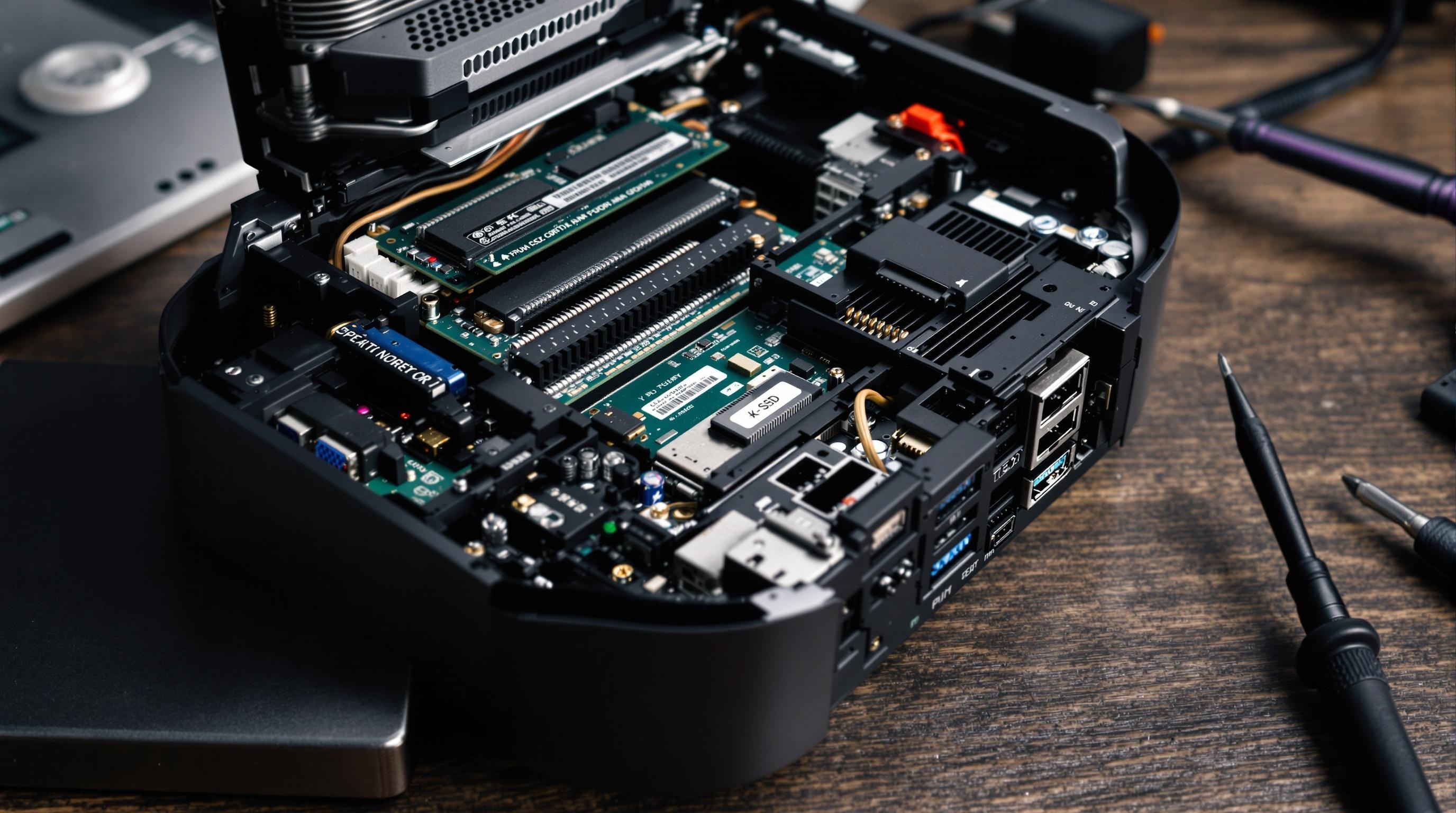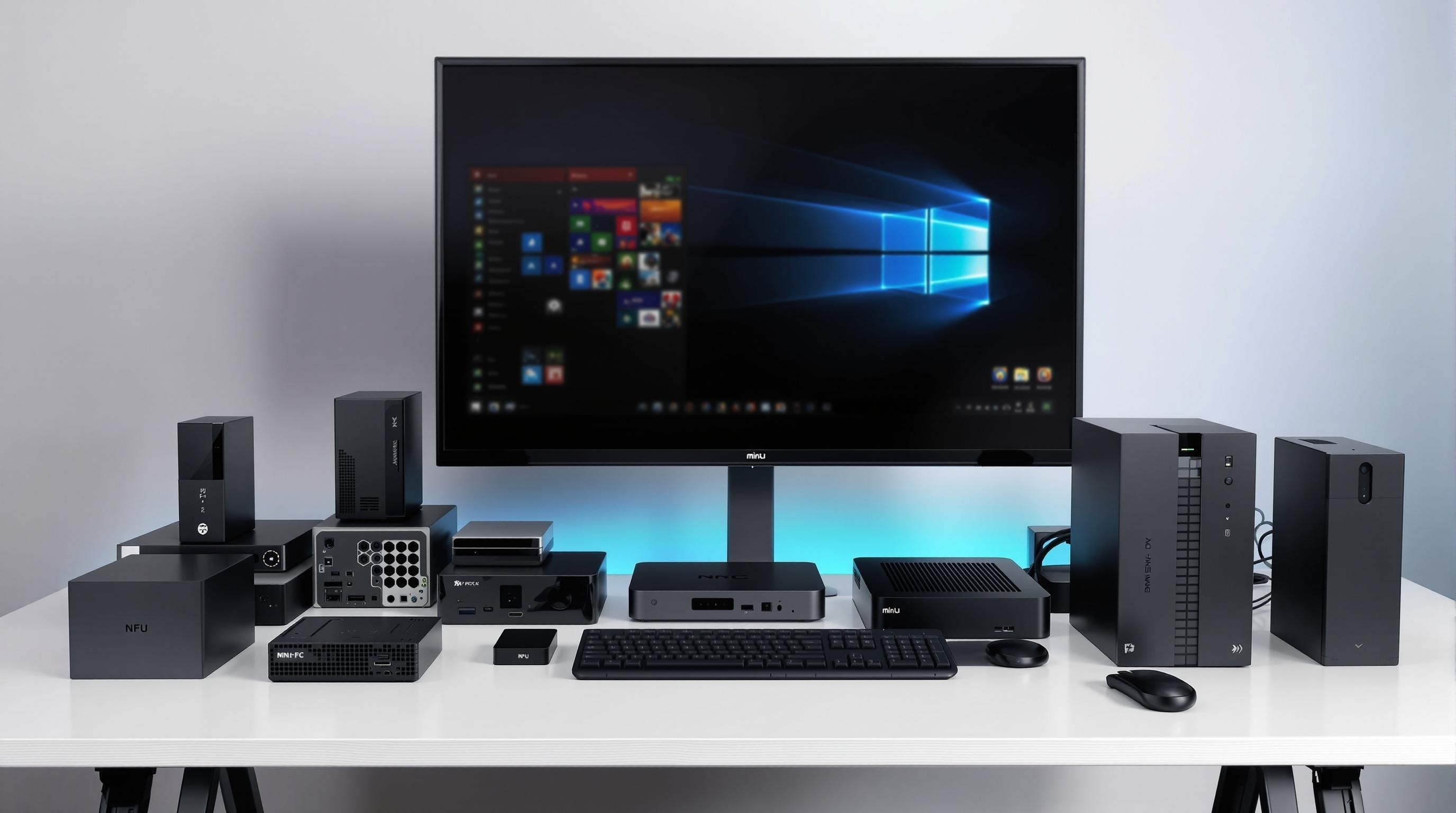
The evolution of computing technology has reached a remarkable inflection point where the traditional relationship between size and performance has been fundamentally redefined. Compact computers and mini PCs represent a sophisticated convergence of advanced semiconductor engineering, thermal management innovation, and intelligent system design that delivers desktop-class computing power in form factors that would have been inconceivable just a decade ago. This transformation extends far beyond simple miniaturization, encompassing a comprehensive reimagining of how we conceptualize computing environments, workspace organization, and the integration of technology into both professional and personal settings.
The modern landscape of compact computing solutions encompasses an extraordinary diversity of form factors, performance capabilities, and specialized applications that challenge conventional assumptions about computer design and functionality. From ultra-compact stick computers barely larger than a USB flash drive to sophisticated mini workstations capable of handling demanding professional workflows, today’s compact computing ecosystem offers solutions for virtually every conceivable application scenario while maintaining the reliability, performance, and expandability expectations established by traditional desktop systems.
Understanding the nuanced differences between various compact computing categories, their respective strengths and limitations, and the optimal application scenarios for each type becomes essential for making informed decisions in an increasingly complex marketplace. The sophistication of modern compact computers demands a thorough examination of architectural approaches, thermal management strategies, connectivity solutions, and performance optimization techniques that enable these diminutive systems to deliver capabilities that often exceed those of much larger traditional computers.
Understanding the Compact Computing Ecosystem
The compact computing landscape encompasses a sophisticated hierarchy of devices ranging from basic compute sticks designed for digital signage and media playback to high-performance mini workstations capable of handling intensive professional applications including video editing, 3D rendering, and scientific computing. This diversity reflects the maturation of the compact computing market and the recognition that different application scenarios require fundamentally different approaches to system design, component selection, and thermal management.
Entry-level compact computers typically focus on energy efficiency, fanless operation, and cost optimization while providing sufficient performance for basic computing tasks including web browsing, document processing, and media consumption. These systems often utilize low-power processors from Intel’s Atom or Celeron families, or AMD’s entry-level APU offerings, paired with modest amounts of memory and storage capacity. Despite their seemingly limited specifications, modern entry-level compact computers can deliver surprisingly capable performance for everyday computing tasks while consuming minimal power and generating virtually no noise.
Mid-range compact computers represent the sweet spot for most users, offering balanced performance, connectivity, and features while maintaining the small form factor advantages that make compact computing attractive. These systems typically incorporate mainstream processors from Intel’s Core or AMD’s Ryzen families, adequate memory and storage capacity for multitasking and application performance, and comprehensive connectivity options including multiple USB ports, video outputs, and network interfaces. The thermal management solutions in mid-range compact computers often involve sophisticated heat dissipation designs that enable sustained performance without excessive noise generation.
High-performance compact computers push the boundaries of what’s possible in small form factors, incorporating powerful processors, substantial memory capacity, high-speed storage solutions, and in some cases, discrete graphics capabilities. These systems often target professional applications, content creation workflows, and specialized computing scenarios where traditional desktop performance is required but space constraints or aesthetic considerations make conventional desktop systems impractical.
The emergence of specialized compact computing categories addresses specific application requirements that general-purpose systems cannot effectively serve. Industrial compact computers prioritize reliability, environmental tolerance, and specialized connectivity options over raw performance or cost optimization. Gaming-focused compact systems emphasize graphics performance and thermal management while maintaining reasonable size constraints. Network-attached storage and server applications have spawned compact systems optimized for storage capacity, network connectivity, and always-on operation.
Architectural Foundations and Design Philosophy

The architectural approach underlying modern compact computers reflects a fundamental shift from traditional desktop design philosophy, emphasizing integration, efficiency, and intelligent component placement over modularity and expandability. This architectural evolution necessitates sophisticated engineering solutions that maximize performance density while managing the complex thermal, electrical, and mechanical constraints inherent in compact form factors.
Motherboard design in compact computers requires extraordinary attention to component placement, signal integrity, and thermal management considerations that are less critical in larger systems. The limited available space demands careful optimization of component layout to minimize interference, reduce heat generation, and maintain signal quality across high-speed interfaces. Advanced compact computer motherboards often incorporate multiple layers of sophisticated circuitry, specialized cooling solutions, and integrated components that would typically be separate modules in traditional desktop systems.
Thermal management represents perhaps the most critical aspect of compact computer design, as the reduced internal volume severely limits natural convection cooling while the proximity of heat-generating components can create challenging thermal environments. Modern compact computers employ various thermal management strategies including sophisticated heat pipe systems, optimized airflow design, strategic component placement, and in some cases, liquid cooling solutions adapted for small form factors. The most advanced compact computers utilize intelligent thermal management systems that dynamically adjust performance and cooling based on real-time temperature monitoring and workload analysis.
Power delivery and management in compact computers requires specialized solutions that efficiently convert and distribute electrical power while minimizing heat generation and electromagnetic interference. Advanced compact systems often incorporate sophisticated power management integrated circuits that provide multiple voltage rails, dynamic voltage scaling, and intelligent power sequencing while maintaining high efficiency across varying load conditions. The power supply solutions for compact computers range from external adapters that reduce internal heat generation to integrated switching power supplies that maximize space efficiency.
Connectivity integration presents unique challenges and opportunities in compact computer design, as the limited available space for ports and connectors must accommodate the diverse connectivity requirements of modern computing applications. Advanced compact computers often employ sophisticated connector arrangements, multi-function ports, and intelligent signal routing to maximize connectivity options within space constraints. Some systems utilize modular connectivity solutions that allow customization of port configurations based on specific application requirements.
Processor Technologies and Performance Characteristics
The processor landscape for compact computers encompasses a diverse range of technologies optimized for different performance, power consumption, and thermal characteristics that directly influence system capabilities and application suitability. Understanding the nuanced differences between processor families, architectural approaches, and performance characteristics becomes essential for selecting compact computers that meet specific application requirements while operating within thermal and power constraints.
Intel’s processor offerings for compact computers span from ultra-low-power Atom and Celeron processors designed for basic computing tasks and fanless operation to high-performance Core processors capable of handling demanding applications while maintaining reasonable thermal profiles. The latest generation Intel processors incorporate sophisticated power management technologies, integrated graphics capabilities, and specialized instruction sets that enhance performance across diverse application scenarios. Intel’s architectural approach emphasizes single-threaded performance, power efficiency, and comprehensive hardware acceleration support that benefits multimedia processing, cryptographic operations, and machine learning workloads.
AMD’s processor portfolio for compact computing focuses on delivering exceptional multi-core performance, integrated graphics capabilities, and competitive power efficiency across various performance tiers. AMD’s Ryzen processors offer substantial multi-threading performance advantages that benefit applications involving parallel processing, content creation, and virtualization workloads. The integrated Radeon graphics in AMD processors often provide superior graphics performance compared to Intel’s integrated solutions, making AMD-based compact computers attractive for applications involving gaming, multimedia processing, or graphics-intensive professional work.
ARM-based processors represent an emerging category in the compact computing space, offering exceptional power efficiency, specialized processing capabilities, and unique architectural advantages for specific application scenarios. ARM processors excel in applications requiring always-on operation, edge computing, IoT integration, and mobile computing scenarios where battery life and thermal efficiency are paramount. The software ecosystem for ARM-based compact computers continues expanding, with increasing support for mainstream applications and development tools.
Specialized processors including those designed for artificial intelligence, machine learning, and edge computing applications are increasingly appearing in compact computer systems targeted at specific professional and industrial applications. These processors often incorporate dedicated neural processing units, tensor processing capabilities, and specialized instruction sets that accelerate AI and ML workloads while maintaining compact form factors and reasonable power consumption.
The performance characteristics of processors in compact computers are significantly influenced by thermal constraints, power delivery limitations, and cooling system effectiveness. Understanding how different processors behave under sustained workloads, their thermal throttling characteristics, and their power consumption patterns becomes crucial for predicting real-world performance in compact computing applications.
Memory Architecture and Storage Solutions
Memory and storage subsystems in compact computers require careful optimization to balance performance, capacity, power consumption, and physical space constraints while providing the responsiveness and reliability expected from modern computing systems. The limited internal space in compact computers necessitates innovative approaches to memory and storage integration that often differ significantly from traditional desktop implementations.
System memory in compact computers typically utilizes SO-DIMM modules, integrated memory solutions, or specialized low-profile memory configurations that minimize space requirements while providing adequate capacity and performance for intended applications. The memory capacity limitations in many compact computers require careful consideration of application requirements and multitasking scenarios to ensure adequate performance without memory-related bottlenecks. Advanced compact computers often support higher memory capacities through innovative motherboard designs or specialized memory configurations that maximize density within space constraints.
Storage solutions for compact computers encompass a wide range of technologies optimized for different performance, capacity, and space requirements. Modern compact computers predominantly utilize solid-state storage solutions that provide excellent performance, reliability, and space efficiency while consuming minimal power and generating little heat. The form factors for storage in compact computers include standard M.2 modules, specialized compact SSD formats, and in some cases, traditional 2.5-inch drives in larger compact systems.
The performance characteristics of storage solutions significantly impact overall system responsiveness, application loading times, and multitasking capabilities in compact computers. High-performance NVMe storage solutions provide exceptional sequential and random access performance that benefits operating system responsiveness, application loading, and file transfer operations. The thermal characteristics of high-performance storage solutions require consideration in compact computers where heat dissipation capabilities may be limited.
Storage expansion options in compact computers vary considerably based on system design and intended applications.

